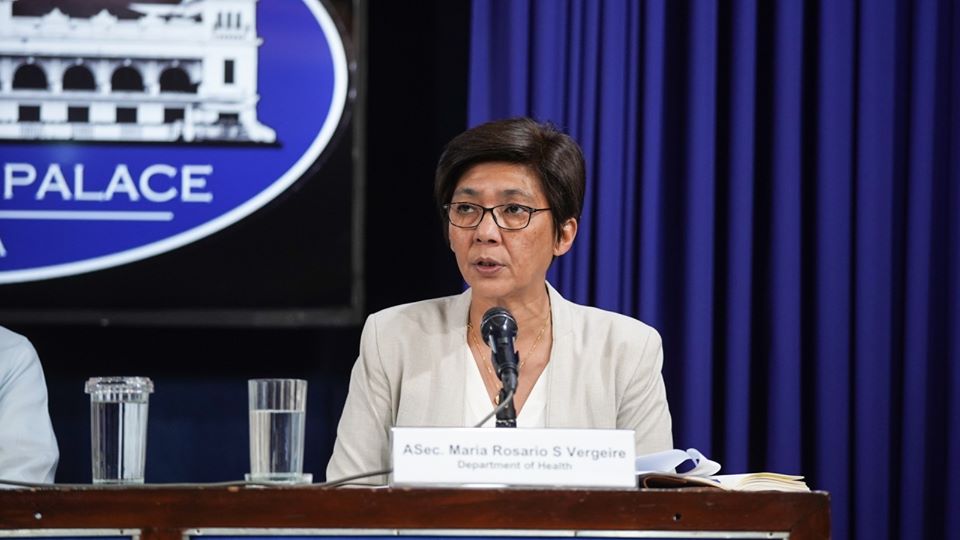The disruption of the daily grind in Metro Manila due to the enhanced community quarantine to contain the coronavirus has resulted in a rare, welcome sight: clear blue skies, thanks to lesser smog.
In Quezon City, the level of pollutants in the air had dropped by as much as 180 percent, after public transport systems were suspended and the general public’s movement was restricted, according to data gathered by AirToday.ph and analyzed by the Institute of Environmental Science and Meteorology of the University of the Philippines Diliman (UP-IESM).
Air quality measurement stations set up in the Lung Center of the Philippines and along Edsa-Muñoz, both in Quezon City, showed decreased levels of particulate matter (PM) 2.5, a small yet deadly compound that could lead to various respiratory and cardiovascular diseases.
“We have never seen this much decrease. During the weekends, there are drops in PM2.5 levels, but not like this,” said Dr. Mylene Cayetano, head of the Environmental Pollution Studies Laboratory of UP-IESM and technical adviser of AirToday.ph.
“With lesser human activities, the air quality really improved,” she said.
Computation
Data analysis led by Cayetano showed an 80 to 180-percent reduction in PM2.5 levels recorded at the measurement station by the Lung Center from 9 p.m. to 4 a.m.
These percentage values, she said, referred to the amount of PM2.5 that was “prevented” from being emitted into the atmosphere due to the lockdown.
Following a 24-hour observation period, data showed that the peak reduction in pollutant levels at this station was recorded at 3 a.m.
Two weeks before the enhanced community quarantine, the average levels of PM2.5 at this hour at the Lung Center station was at 20 micrograms per normal cubic meters of air (ug/Ncm).
A week before the lockdown, the pollutant levels dropped to 14 ug/Ncm, and even further down to 7.1 ug/Ncm during the imposition of the quarantine, showing a reduction of 180 percent from two weeks ago.
In calculating the percentage reduction, Cayetano said she got the difference between the value recorded during the enhanced community quarantine (ECQ) and the value two weeks before it was imposed.
“Then you divide the result by the value during the ECQ and and multiply it by 100,” she explained.
(20 less 7.1 results in a difference of 12. 19, which is then divided by 7.1. The result of 1.8 is then multiplied by 100, or a reduction by 181.6 percent)
Crucial for hospitals
A partnership between UP-IESM, the Rotary Club of Makati and the Lung Center of the Philippines, the AirToday.ph project measures air quality through the two stations in Quezon City.
Similar trends were observed in the station located in Edsa-Muñoz, where reduction of 70 to 90 percent in the levels of PM2.5 was recorded.
Cayetano said this decrease in pollutants was crucial, particularly in the Lung Center, which has been declared as one of the hospitals catering exclusively to patients with coronavirus disease.
Other government-run and tertiary hospitals are also located nearby, such as the East Avenue Medical Center, the Philippine Heart Center and the National Kidney and Transplant Institute.
“This is a manifestation that if we lessen the human activities, particularly vehicle emissions, we can protect the patients that are in the hospital zone,” she said. “In the time of COVID-19, these patients need clean air more than ever.”
Decreased pollutants were also recorded by different monitoring stations of the Department of Environment and Natural Resources (DENR) across Metro Manila during the lockdown.
In the cities of Las Piñas and Marikina, the 24-hour average levels for PM10 — a particulate matter larger than PM2.5 — went down to 31.6 ug/Ncm on March 22, from 57.8 ug/Ncm on March 9. The PM2.5 recorded in these cities also went down to 27.2 ug/Ncm from 31.2 ug/Ncm over the same period.
In the cities of Muntinlupa and Parañaque, the PM10 and PM2.5 levels were recorded at 10.7 and 14.2 ug/Ncm, respectively, also on March 22. These levels were lower compared to those logged before the lockdown, which was at 28.7 and 27.2 ug/Ncm, respectively.
Clean Air standards
According to the Philippine Clean Air Act, the average values of PM10 in a 24-hour measurement period should not exceed 150 ug/Ncm. The average values of PM2.5, meanwhile, should not exceed 50 ug/Ncm in the same period.
Government data indicate that mobile sources are largely to blame for the poor air quality in the country. This reality is reflected even more in the National Capital Region, where vehicles are responsible for nearly 88 percent of pollutants, according to latest data from the Department of Environment and Natural Resources.
The World Health Organization considers air pollution as a major killer, causing the deaths of some 4.2 million people in 2016 alone. In the Philippines, as many as 120,000 Filipinos die yearly due to air pollution from cars and fossil fuel burning.
Worldwide drop
As the coronavirus spread and upended the world’s economies, many activities that cause pollution were placed to a screeching halt. Across the world, emissions in the atmosphere have dramatically fallen in major metropolitan areas, such as in the United States and in China, due to the governments’ efforts to lock down cities.
While these emissions were expected to rebound once the pandemic is over, experts said the decreased levels in pollutants during the quarantine should also offer lessons moving forward.
Cayetano said these data simply show that clean air is attainable in the country’s economic and political center.
“A lockdown is one drastic example… but the data shows that there needs to be measures that would be long term, sustainable and would not affect the economy and our daily activities,” she said.
“The demand for mobility will always be there,” she said, “so we need to put up a sustainable and inclusive transport system, with clean energy as source.”





